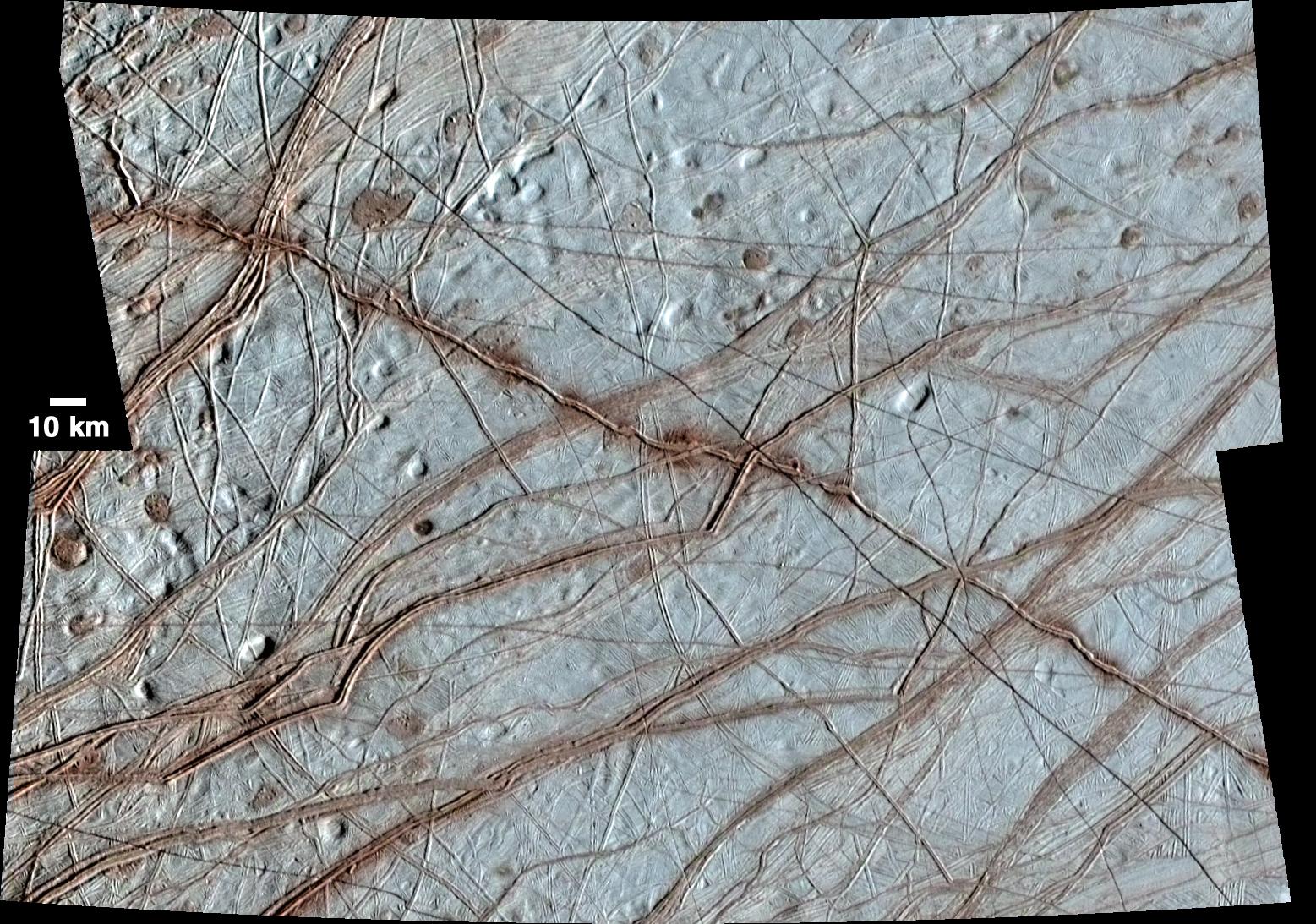All Resources
Europa's Rhadamanthys Linea

Europa's surface is covered with a vast network of linear features such as cracks, ridges, and bands, as well as other smaller circular features that include pits, spots, domes, and microchaos. This image, created from clear-filter images taken on the Galileo spacecraft's 17th orbit around Jupiter and colorized with lower-resolution images taken on Galileo's first orbit around Jupiter, shows a huge variety of these feature types. Of particular note is the prominent ridge at the center of the image, called Rhadamanthys Linea. While most ridges have a reddish appearance in colorized images such as this enhanced color version, Rhadamanthys appears to have uneven blotches of darker, redder material which are more prominent in some locations than in others. Some scientists have interpreted the appearance of Rhadamanthys to indicate that it is a recently, or perhaps currently, active feature on Europa's surface.
More on Rhadamanthys can be seen here: https://photojournal.jpl.nasa.gov/catalog/PIA01407.
This image was taken using the Galileo Solid-State Imager (SSI) at a resolution of 224 meters per pixel. North is at the top, and the image is centered approximately at 30 degrees north latitude and 220 degrees longitude. The image was taken on September 26, 1998.
The Galileo mission was managed by NASA's Jet Propulsion Laboratory in Pasadena, California, for the agency's Science Mission Directorate in Washington. JPL is a division of the California Institute of Technology, Pasadena.
Additional information about Galileo and its discoveries is available on the Galileo mission home page at http://solarsystem.nasa.gov/galileo/. More information about Europa is available at http://solarsystem.nasa.gov/europa.


